Analysis of crop residue use in small holder mixed farms in Ethiopia

Authors:
Determinants of the use of cereal and pulse residue for livestock feeding and soil mulching among smallholder farmers in the mixed farming system were analyzed. Crop residue (CR) is dual purpose resources in the mixed crop–livestock systems of the Ethiopian highlands. They serve as livestock feed and inputs for soil and water conservation. They are generated predominantly from cereals and pulses. However, in view of the allocation of CR, soil conservation and live- stock are two competing enterprises. Identifying the determinants of the intensity of use of cereal and pulse residue may help in designing strategies for more efficient CR utilization. Data on CR were generated and its utilization was collected in two highland regions in Ethiopia from 160 households using a structured questionnaire. The data were analyzed using the multivariate Tobit model. Results of the study showed that farmers prefer using CR from pulses over CR from cereals for livestock feeding purposes. The proportion of CR from pulses that was used as feed was positively affected by education level of the farmer, livestock extension service, number of small ruminants and CR production from the previous season. Distance of farm plots from residences of the farm households negatively affected the proportions of cereal and pulse residue used for feed. The use of pulse residue increased significantly when the women participated in decision making on CR utilization. The proportion of cereal and pulse residue used for soil mulch was positively affected by the education level of the farmer, the distance between the homestead and the cultivated land, extension service, awareness about soil mulch, the slope of cultivated land, participation in farmer-to-farmer extension and CR generated in the preceding season. In view that pulse CR have better nutritive value compared with cereal CR, better utilization of CR could be achieved by maximizing the use of pulse residue as livestock feed and optimizing the use of cereal residue as soil mulch. More livestock extension on the nutritive value of pulse residue should be provided to the farmers who cultivate sloppy plots. Encouraging the culture of labor exchange among the farmers could result in increased labor availability in the farms that would facilitate the transport and storage of pulse residue and increase its use as livestock feed. Increasing the awareness among farmers about the superiority of the pulse residue over cereal residue as feed and encouraging use of cereal residue as soil mulch could optimize the utilization of CR in the household.
